A lifetime behind the lens: The inspiring journey of veteran photojournalist Ru Suichu
Ru Suichu, a 91-year-old veteran photojournalist, has dedicated his life to capturing the perfect shot. His passion has taken him to the remotest corners of China, documenting the country through his evocative images.
In his career spanning over seven decades, Ru braved inhospitable environments like the snowy mountains of the Qinghai-Tibet Plateau, and took the world's first photos of the sources of the Yellow and Yangtze rivers, China's mother rivers. His extraordinary journey has not only left a mark in the history of photography, but also inspired generations of Chinese photographers to push the boundaries of their craft.
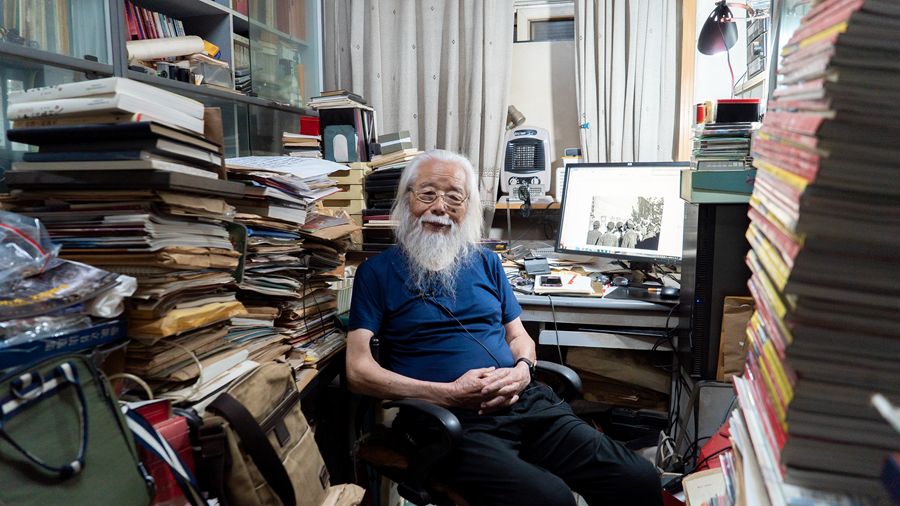
Ru Suichu, a 91-year-old veteran photojournalist who took the world's first photos of the sources of the Yellow and Yangtze rivers, sits among his lifetime of work in his study in Beijing on Sep. 12, 2023. [Photo by Sun Tao/CICG]
An unbreakable bond with photography
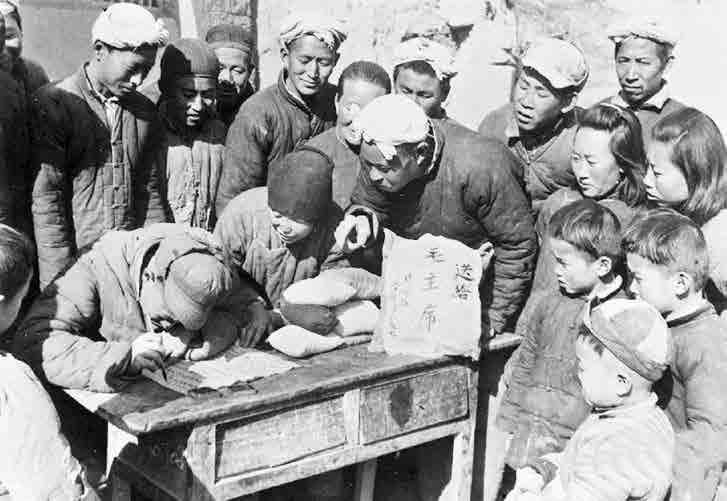
One of the earliest photos taken by Ru Suichu after he became a photojournalist. The photo shows farmers writing a letter to Chairman Mao Zedong on the eve of the Spring Festival in 1951. [File Photo]
In 1949, Ru began as a print journalist at the Northwest Branch of Xinhua News Agency. Initially, he had many doubts about his abilities as a reporter.
"I didn't have much education or social experience," Ru said in his home in Beijing as he recalled the start of his career. "Moreover, my slight frame made me look like a child, which affected my confidence in conducting interviews."
Fortunately, Ru saw an opportunity to learn photography when the newly established photography department was looking for personnel. Ru approached the then editor-in-chief Lin Lang and expressed his desire to join, and Lin agreed on the condition that Ru would not quit at whim.
"I assured him that I would not quit," Ru said. "That brief conversation changed the course of my life, creating an unbreakable bond between photography and myself."
Capturing China's mother rivers
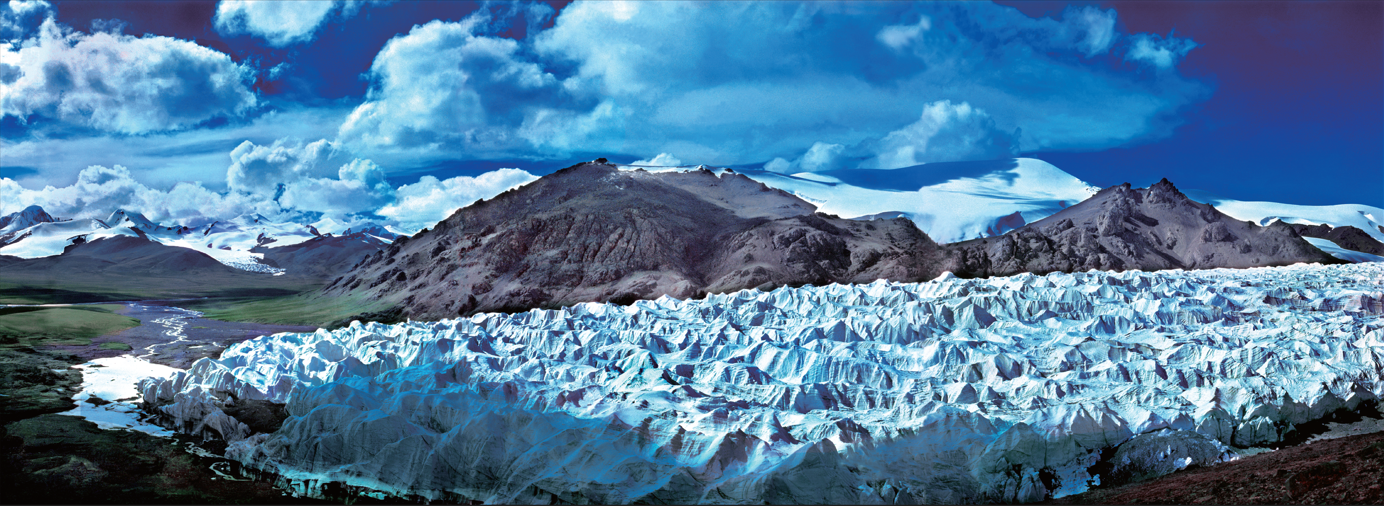
Ru Suichu took this photo of the Jianggendiru glacier of Geladandong Peak in the middle of the Tanggula Mountain Range in the northwestern province of Qinghai on Aug. 25, 1976. The Yangtze River begins its journey in the glacial meltwaters. [File photo]
In 1954, Ru started working as a photojournalist in China Pictorial, a publication under China International Communications Group. Over time, he journeyed throughout China's frontiers and ethnic regions. He made more than 10 trips to Xinjiang, each lasting between three to 15 months, bringing back images from the Altay Mountains to the Tarim Basin to readers around the country.
"I want to go where hardly any reporters have been, to dig up the stories that people are eager to know but just had not heard about yet," Ru said.
His crowning achievement came in 1972, when he had the opportunity to capture the source of the Yellow River.
With horses and yaks carrying equipment and supplies, Ru's exploration team ventured deep into the marshland area of the Qinghai-Tibet Plateau over a span of 29 days. Reflecting on their time traversing the plateau, which has an average elevation exceeding 4,000 meters, Ru said that the most formidable challenge they faced was the region's extreme weather.
"The plateau's climate was harsh and unforgiving," Ru said. "Skies could change from clear to overcast in minutes. Intense ultraviolet rays scorched the skin, while wind and snow could transform the grasslands into a vast, white expanse."
The rivers presented another major obstacle, as the rainy season made the currents unpredictable and risky. Before crossing the water, the Tibetan militiamen in the team would be the first to enter the water on their horses to look for a safe path, and then led the others across one at a time. They also carried boxes filled with photography equipment on their shoulders to walk across the river.
Ru said that, without the help of the experienced and strong Tibetan militiamen who lived in the wild, his team would have had a hard time carrying out that exploration plan.
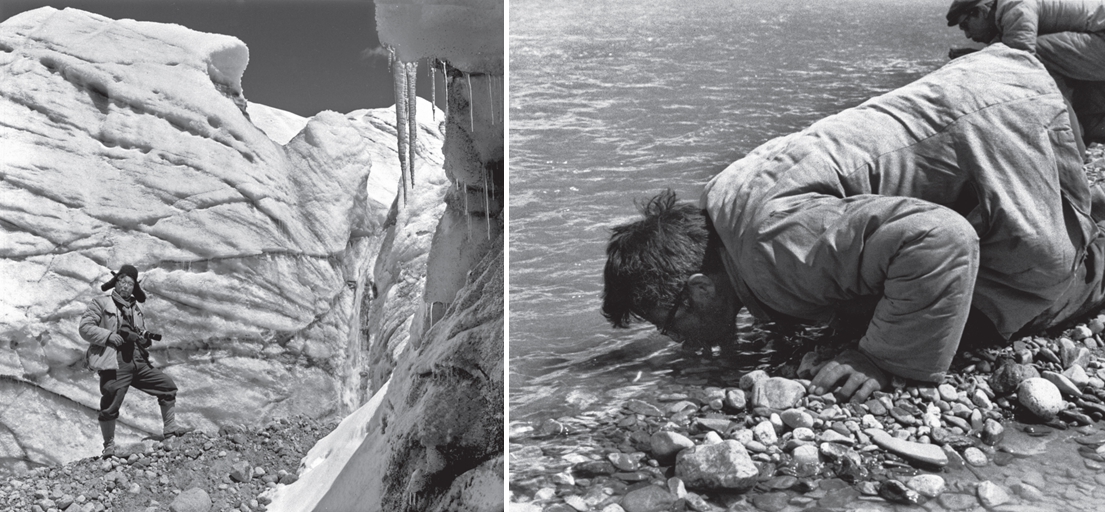
The photos taken in August 1976 show Ru Suichu traveling to the origin of the Yangtze River. [File photo]
After traveling west through Gyaring Lake and Ngoring Lake, Ru and his team entered the Yogu Zonglie Basin. It was at the southwestern edge of the basin that they finally discovered a spring gushing forth from the earth.
"The surging spring formed a stream less than a meter wide, which turned out to be precisely the source of the Yellow River," Ru said. "As I gazed at the meandering stream stretching into the distance, I was in awe of the fact that the mighty and turbulent Yellow River had its humble beginnings right before my eyes."
Despite experiencing altitude sickness and fatigue from the journey, Ru quickly jumped off the horse and took advantage of a ray of sunlight that came through the clouds to capture the breathtaking landscape at the source of the Yellow River.
The trip to the Yellow River's source has become a significant chapter in Ru's photojournalism career, instilling in him immense confidence. It also made him realize the importance of documenting China through photography.
Four years later, Ru traversed deep into Qinghai on another expedition for the source of the Yangtze River. Bracing freezing temperatures at an elevation of 6,000 meters above sea level, he took the first photos of the Yangtze's headwaters. The team's discovery helped to confirm the Yangtze as the third longest river in the world.
A legacy of excellence and preservation
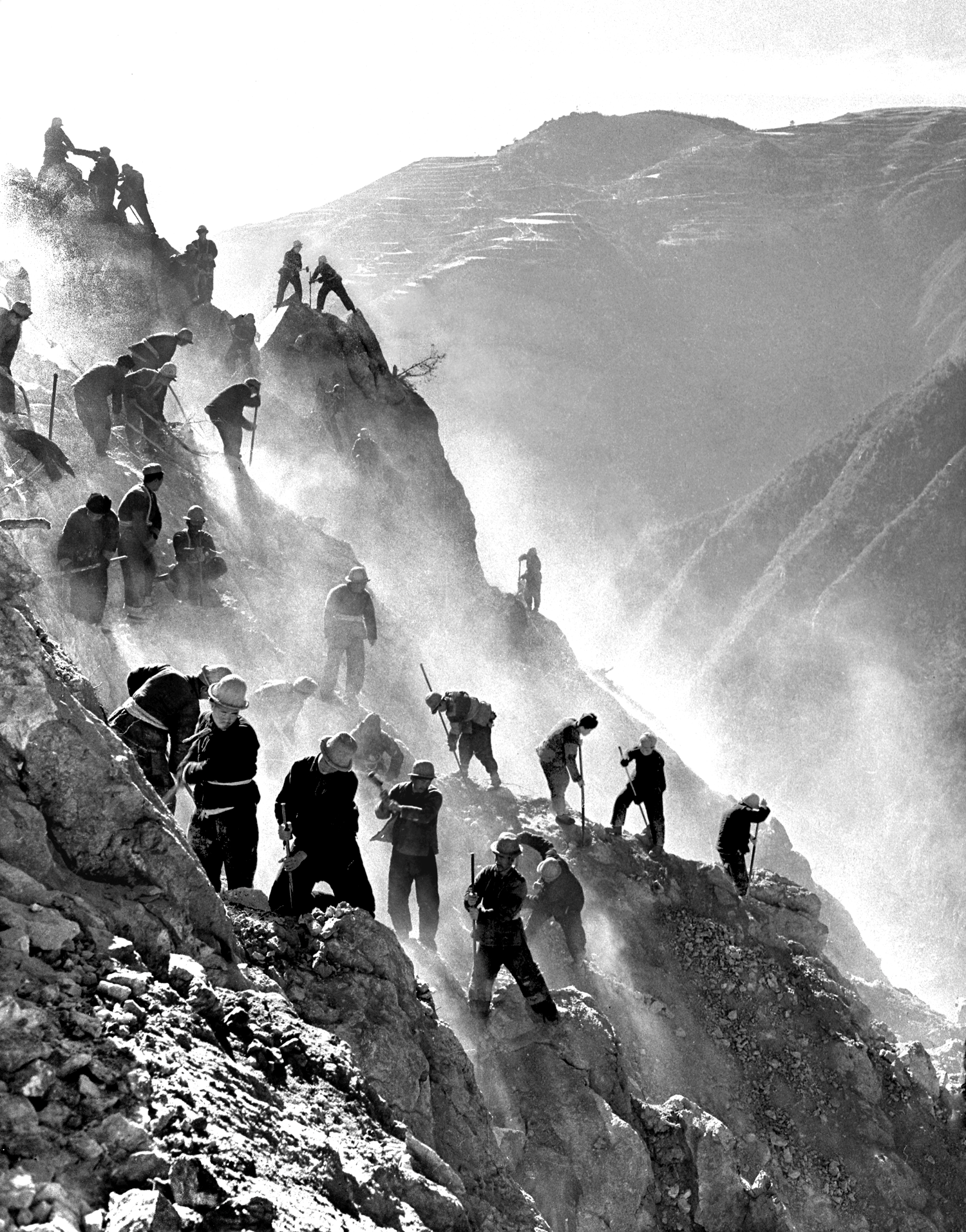
Photo taken by Ru Suichu in Lintao, Gansu province in 1958. Titled "Bringing Water from Taohe River to the Mountain," the photo won the gold award at two global photography exhibitions in 1959. [File photo]
Over the past 70 years, Ru's photographs have been shown in national and international exhibitions. They have captured the essence of China's natural beauty and reflected the remarkable transformation of the country. Ru received two gold awards at global photography exhibitions as early as 1959. In 2015, he was honored with the Lifetime Achievement Award of the Golden Statue Award for China Photography.
Even after retiring, Ru's passion for photography has remained unwavering. Recognizing the urgent need to preserve the legacy of photojournalism in China, Ru initiated the establishment of a website dedicated to the works of China's esteemed photographers in 2008.
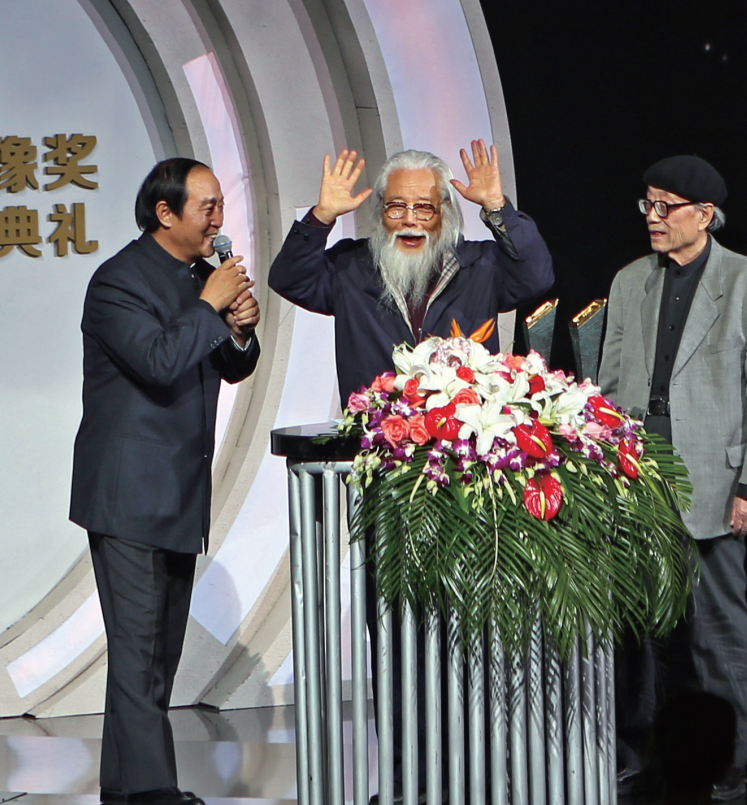
Ru Suichu receives the Lifetime Achievement Award of the Golden Statue Award for China Photography on Jan. 8, 2015. [Photo by Dong Fang/China Pictorial]
To date, the online platform has exhibited the works of over 180 renowned photographers, spanning different eras and themes, with the earliest photo dating back to 1920.
With a sparkle in his eyes, Ru said he looked at the photos he took over his career as precious relics. "Our society is developing fast, and today's reality will be tomorrow's history. History cannot be repeated, and that's why these old photos are valuable. They offer a rich, authentic, and immersive glimpse into the past, making history come alive in the most real sense."


